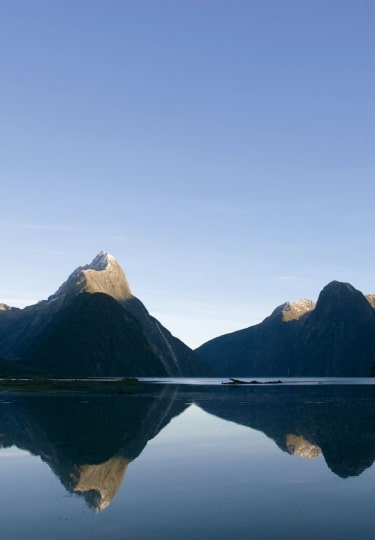The most famous landmarks in New Zealand showcase that this is a land of extremes. From shimmering cities such as Auckland to the majestic expanses of the Southern Alps, there can be few countries in the world that pack so much into such a relatively small space.
Towering mountain peaks, glacial lakes, dense forests, fast-flowing rivers and deep fjords all provide an incredible natural landscape, loved by adrenaline junkies who get their kicks taking part in extreme sports.
Add in the incredibly deep cultural roots of the Māori, magnificent architecture and world-class wine regions and it’s not hard to see why so many visitors fall for the country and never want to leave. Here are the 14 most famous landmarks in New Zealand.
Sky Tower, Auckland, North Island
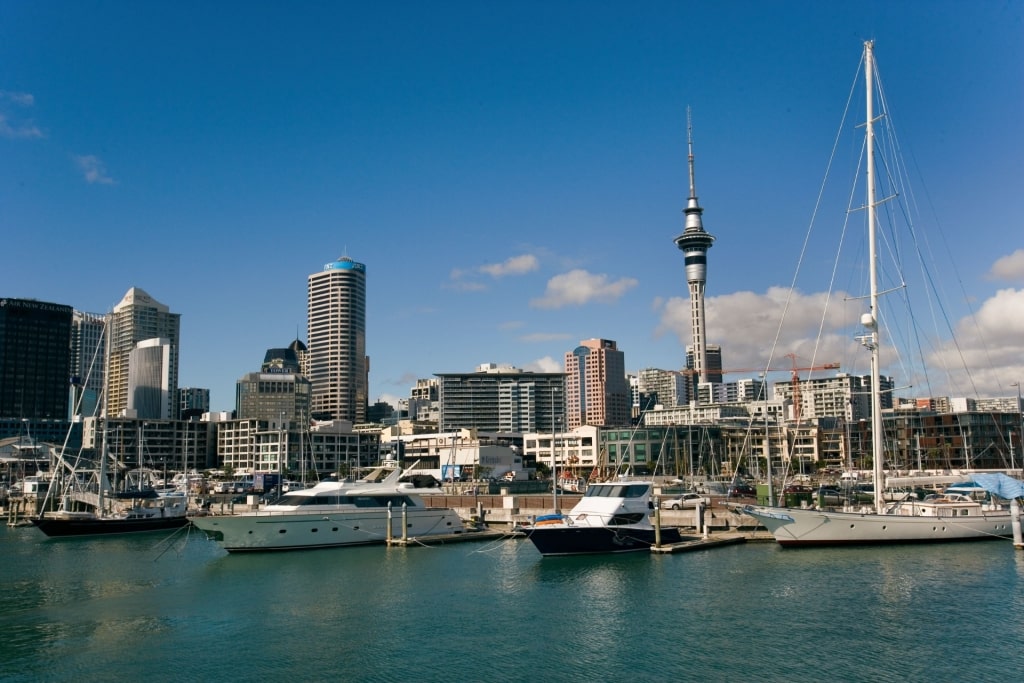
Sky Tower in Auckland, North Island
Known as the “city of sails” thanks to its fabulous harbor and yachting community, Auckland is one of New Zealand’s most beautiful cities, as well as the largest, with an incredible skyline and some fabulous beaches.
It’s best viewed from two separate spots. One is out on the water itself, while the other is from the city’s most recognizable icon, the 1,076-foot Sky Tower.
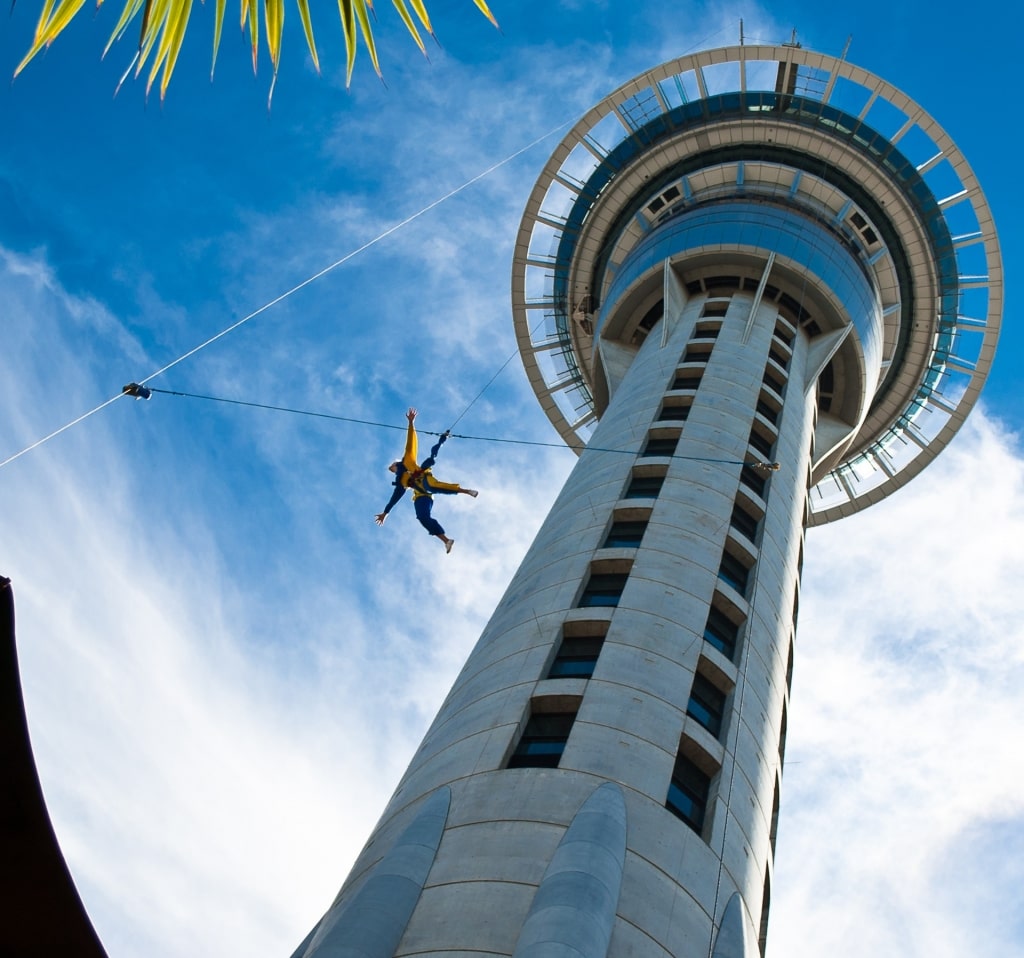
Sky Jump in Auckland, North Island
Set at the corner of Victoria and Federal Streets in the Central Business District, its Level 51 observation deck looks out over the super yachts of Viaduct Harbor, and the city’s oldest park, Auckland Domain.
The tower is also home to a café, a restaurant and two adrenaline experiences, the outdoor Sky Walk and the Sky Jump, an 11-second wired freefall to ground level that is sure to get the heart racing.
Read: Best Things to Do in Auckland
Glow Worm Caves, Waitomo, North Island
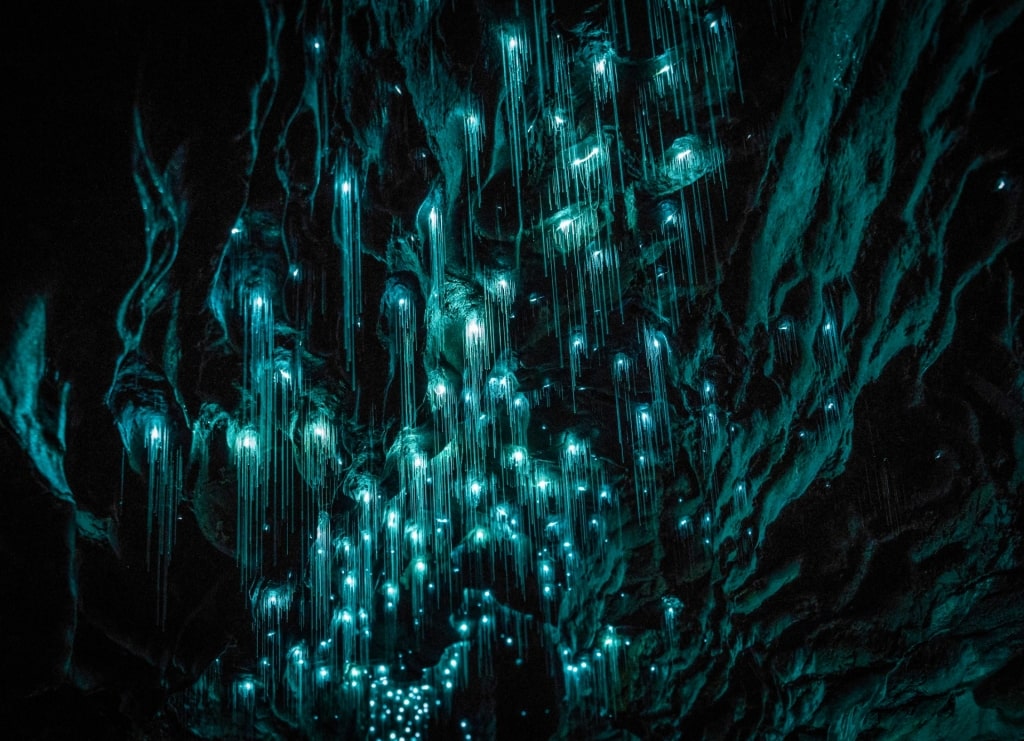
Glow Worm Caves in Waitomo, North Island
Much of New Zealand can feel like visiting another world and nowhere is that probably more true than this series of underground limestone caverns and rivers, lined with stalactites and stalagmites and home to a unique population of glow worms.
The caves have been a tourist attraction on the North Island for more than 130 years. Visitors can take a walk through some of the larger caves before embarking on a black water rafting trip on an underground river for the best view of this spookily beautiful phenomenon, of millions of pinpricks of light.
Larnach Castle, Dunedin, South Island
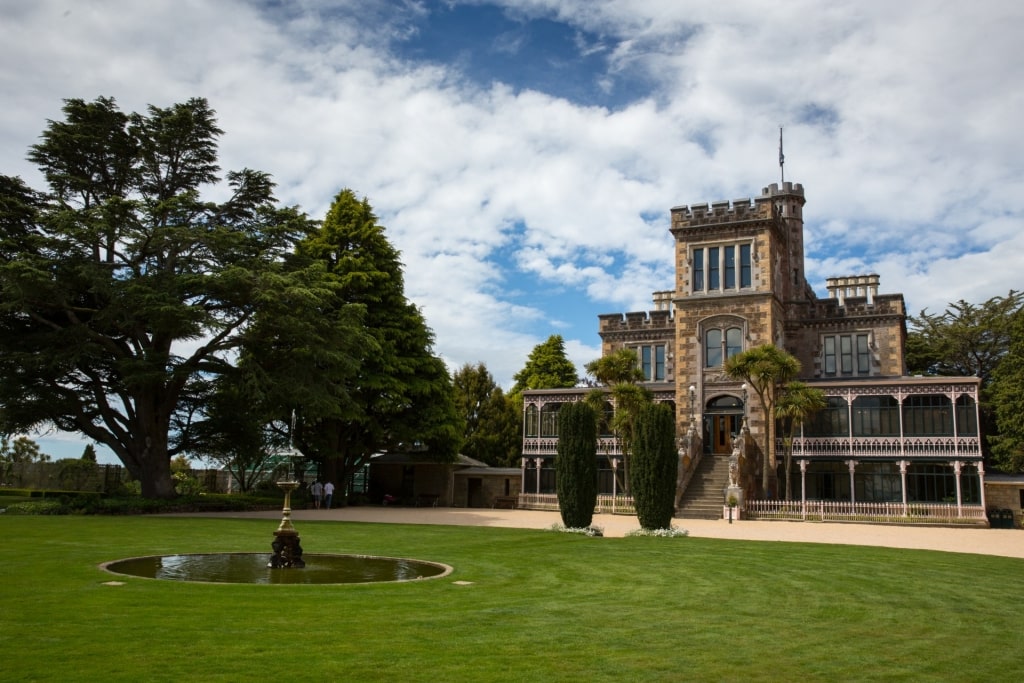
Larnach Castle in Dunedin, South Island
New Zealand’s only castle sits in the middle of the Otago Peninsula, a long stretch of mountainous land that runs parallel to the mainland to create the natural Otago Harbor.
Built in 1871 by architect R.A. Lawson as a private home for entrepreneur and politician William Larnach in Dunedin, the gothic revival castle has been open to the public as a tourist attraction since 1967, known for its extensive gardens and rich program of events.
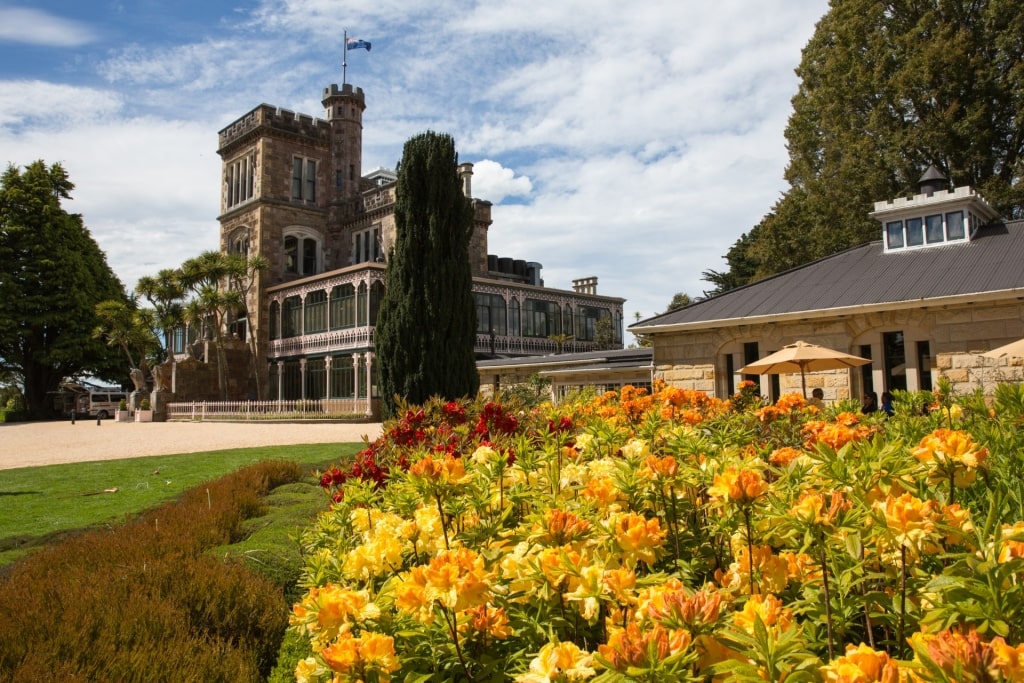
Larnach Castle in Dunedin, South Island
Heritage New Zealand designated it a New Zealand Landmark in 2018. Exploring the castle is one of the best things to do in Dunedin, and is in fact one of the few attractions in New Zealand to be open 365 days a year.
Mount Maunganui, Tauranga, North Island
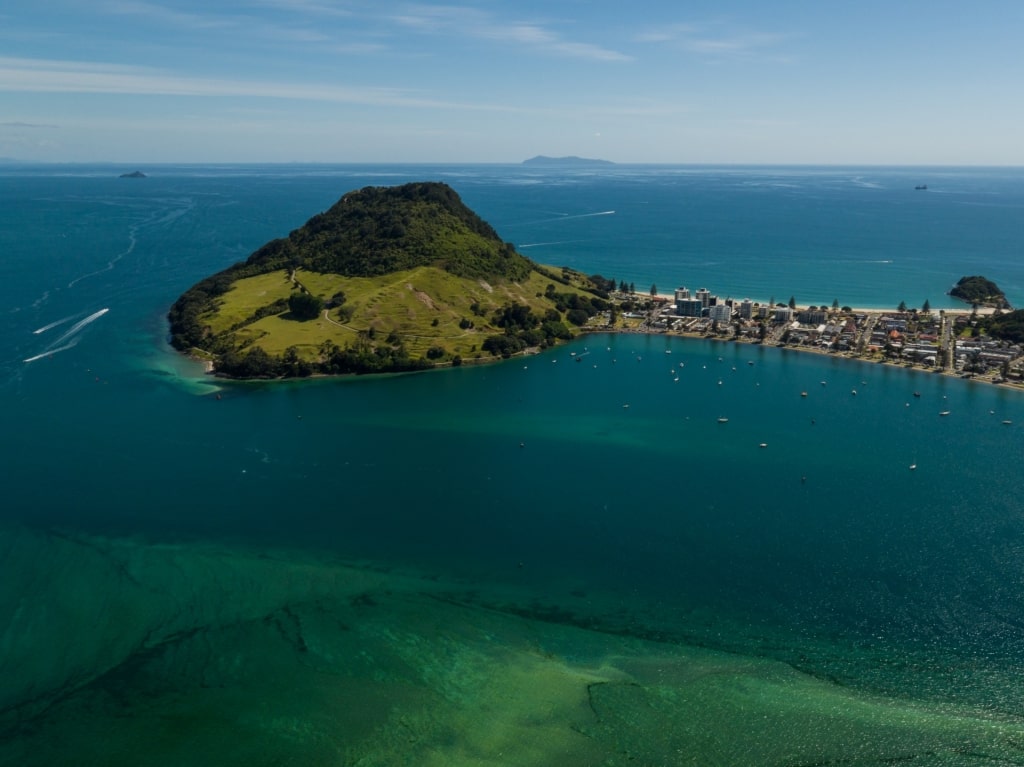
Mount Maunganui in Tauranga, North Island
Sitting on the end of a peninsula that protects the harbor at Tauranga, Mount Maunganui is an almost perfectly formed extinct volcano and sacred Māori site from which stretches a white sand surf beach overlooking the famed Bay of Plenty.
The Mount itself is home to some beautiful hiking trails to the summit with varying degrees of difficulty, though the effort is worth it for the incredible views. The beach itself is regularly voted among the best in the country and its shores are lined with restaurants and bars.
Read: Exciting Things to Do in Tauranga
Pōhutu Geyser, Rotorua, North Island

Pōhutu Geyser in Rotorua, North Island
In a world of instant gratification, there’s no need to hang around too long for social media-worthy images of the Southern Hemisphere’s largest and most powerful geyser and one of the most famous landmarks in New Zealand.
Part of the Te Puia Rotorua Geothermal Park, it blows around 20 times a day with each explosion sending spurts of blistering steam into the air for up to 20 minutes.

Māori village in Rotorua, North Island
The surrounding park is home to more than 60 other geysers, 500 hot springs and numerous bubbling mud pools, making it an ideal location for natural spa treatments.
It’s also home to a traditional Māori village and cultural center offering historical recreations and traditional artifacts and souvenirs.
Arthur’s Pass, Southern Alps, South Island
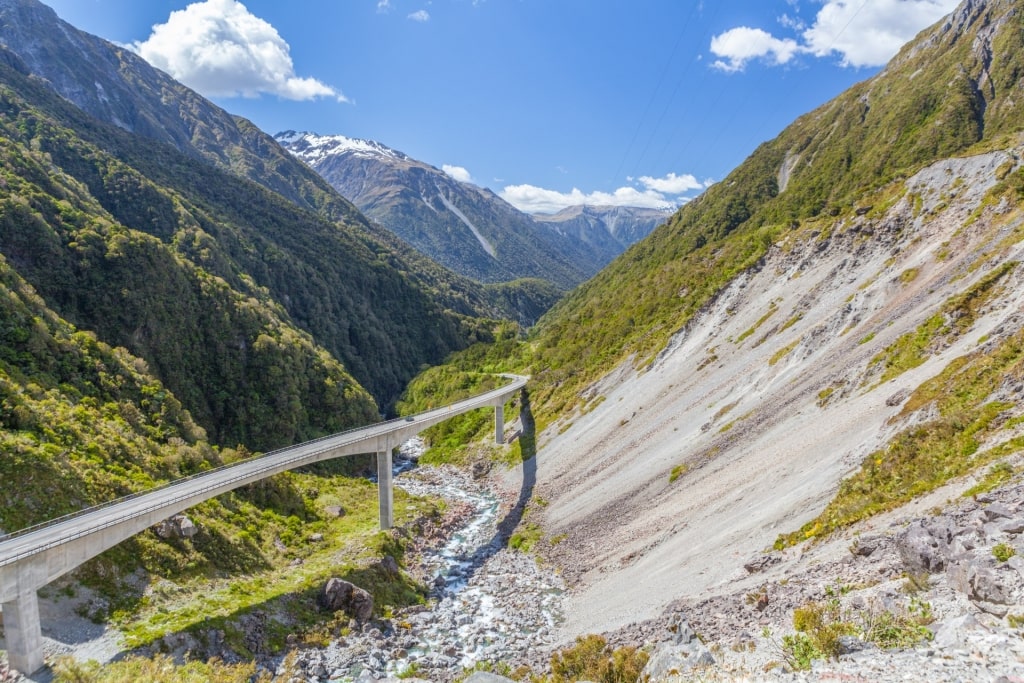
Arthur’s Pass in Southern Alps, South Island
The snowy peaks of the Southern Alps dominate many of the amazing vistas on the South Island as they run like a backbone over the surrounding landscapes for more than 300 miles.
Arthur’s Pass is the highest mountain pass over the range, a small township sitting at around 2,400 feet and a base for exploring the surrounding eponymous Arthur’s Pass National Park, a rugged and largely undeveloped landscape of towering mountains, steep gorges and deep rivers.
Hobbiton, Matamata, North Island
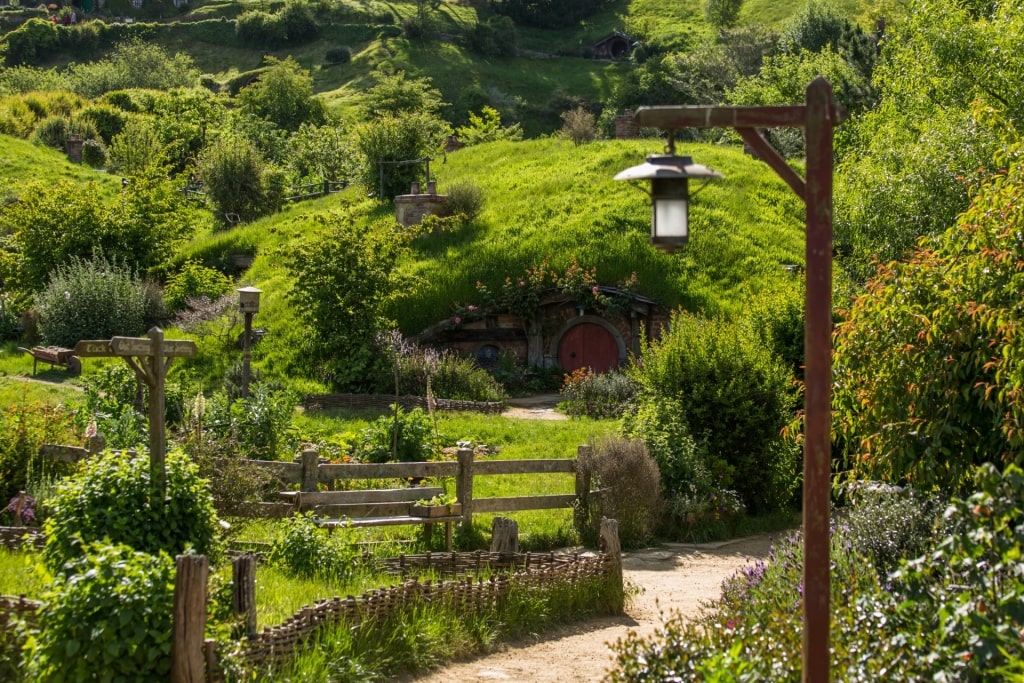
Hobbiton in Matamata, North Island
Set among the rolling hills of a former 1,250-acre Waikato sheep farm, this magical, fairy-tale landmark in New Zealand features gaily colored wooden houses set into the hillside overlooking a huge pine tree and a lake.
It’s surely just how renowned author J.R.R. Tolkien envisioned some of the settings for his best-selling fantasy novels.
It offers film tours of sets brought to life by famed movie director Peter Jackson, banquet tours, and special events that include an annual beer festival and a half-marathon around the site.
Milford Sound/Piopiotahi, Fiordland National Park, South Island
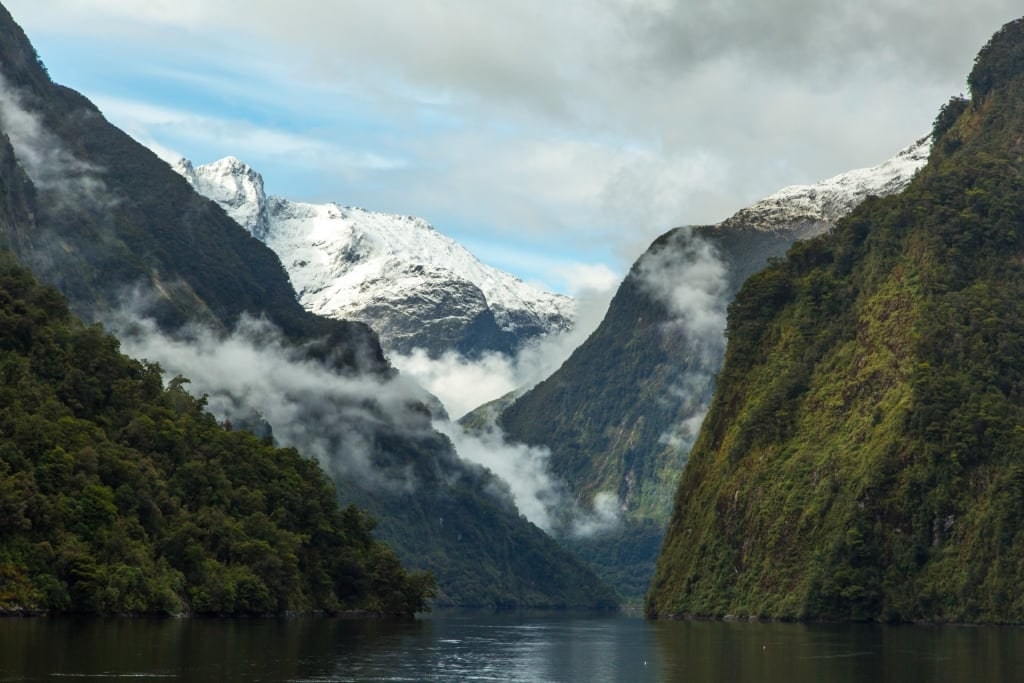
Milford Sound in Fiordland National Park, South Island
This vast fjord in the Fiordland National Park is one of New Zealand’s most beautiful places.
Often described as the “eighth wonder of the world”, Milford Sound cuts some nine miles into the country from Tasman Sea on the west coast, and consists of towering cliffs, majestic waterfalls (some that drop for 3,000 feet or more) and vast forested slopes.
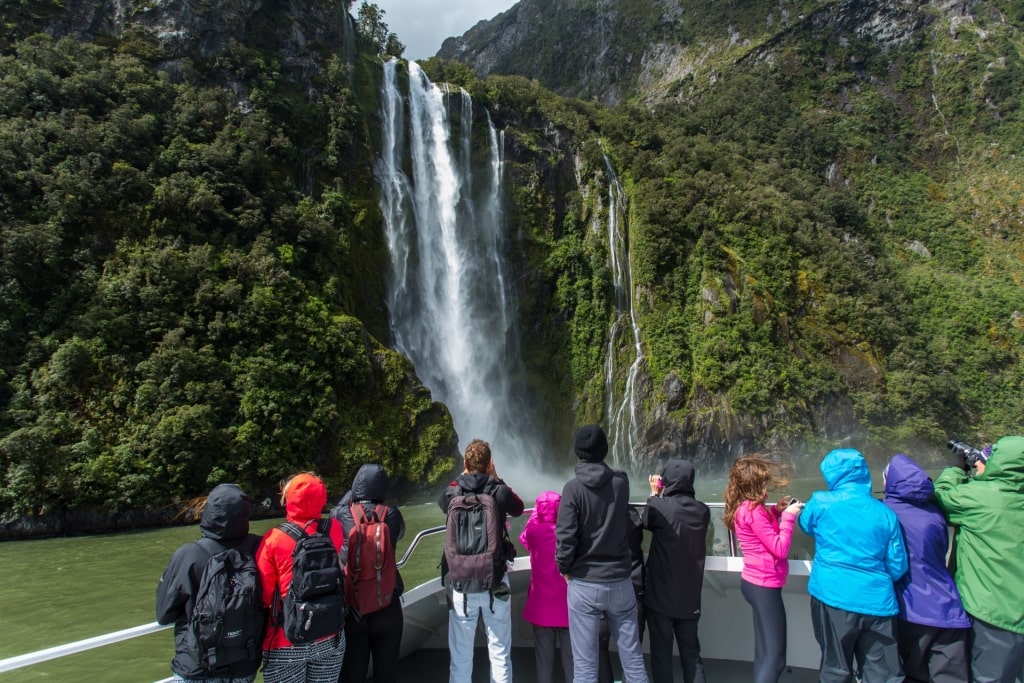
Fiordland National Park, South Island
The stunning New Zealand fjord can be explored in a number of ways. Ships, boats and kayaks can all enter the sound, while immense walking trails abound.
Underwater explorations are also available; the sound is home to unique black coral that can be seen on either a scuba dive or from the underwater observatory at Harrison Cove.
Kawarau Bridge, Queenstown, South Island
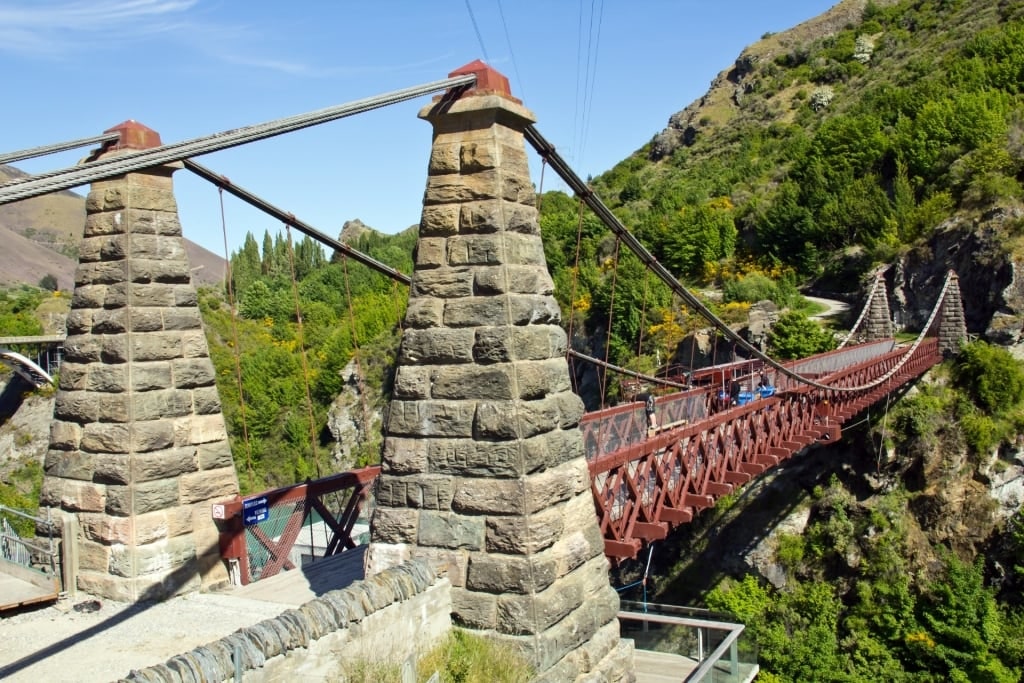
Kawarau Bridge in Queenstown, South Island
In a country that seems to thrive on adrenaline-fuelled adventures, Queenstown, overlooking Lake Wakatipu on the South Island, is its beating heart, with all manner of daredevil adventures on offer from skydiving to jet boating.
The place where it all began is this historic 1880 suspension bridge, known as the birthplace of bungee jumping.
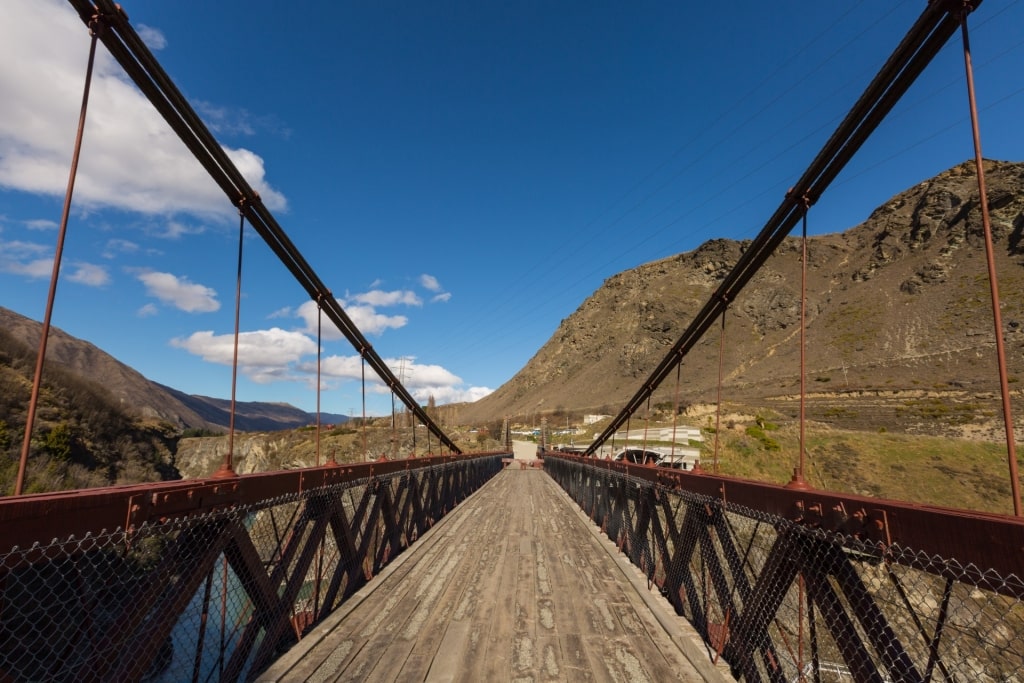
Kawarau Bridge in Queenstown, South Island
Originally built to provide access over the Kawarau River to the Otago goldfields, it struck its own rich seam in 1988 when A.J. Hacket launched the first commercial jump here and has since gone on to be the most iconic jump location in the world.
Those not brave enough to take the leap of faith can watch on from the neighboring viewing platform or walk/cycle across the bridge which also forms part of the Arrow River Bridges Trail.
Marlborough Sounds, Marlborough, South Island
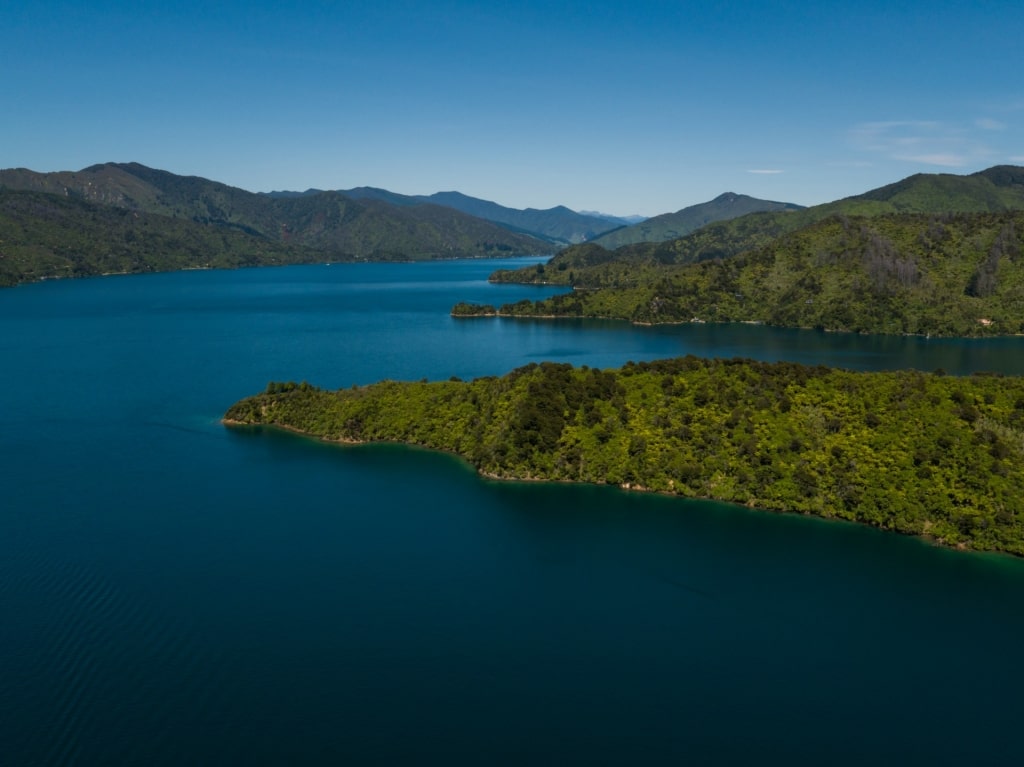
Marlborough Sounds, South Island
On the northern tip of the South Island and east of Nelson lay the Marlborough Sounds, a vast network of sunken ancient river valleys that stretch for almost 1,000 miles, or around a tenth of New Zealand’s total coastline.
The Sounds’ unique habitat managed to save the crew of Captain James Cook’s first explorers after a unique grass high in vitamin C was found to help cure their scurvy in 1770. In addition, the entire breeding population of New Zealand king cormorants lives on just a few islets here.
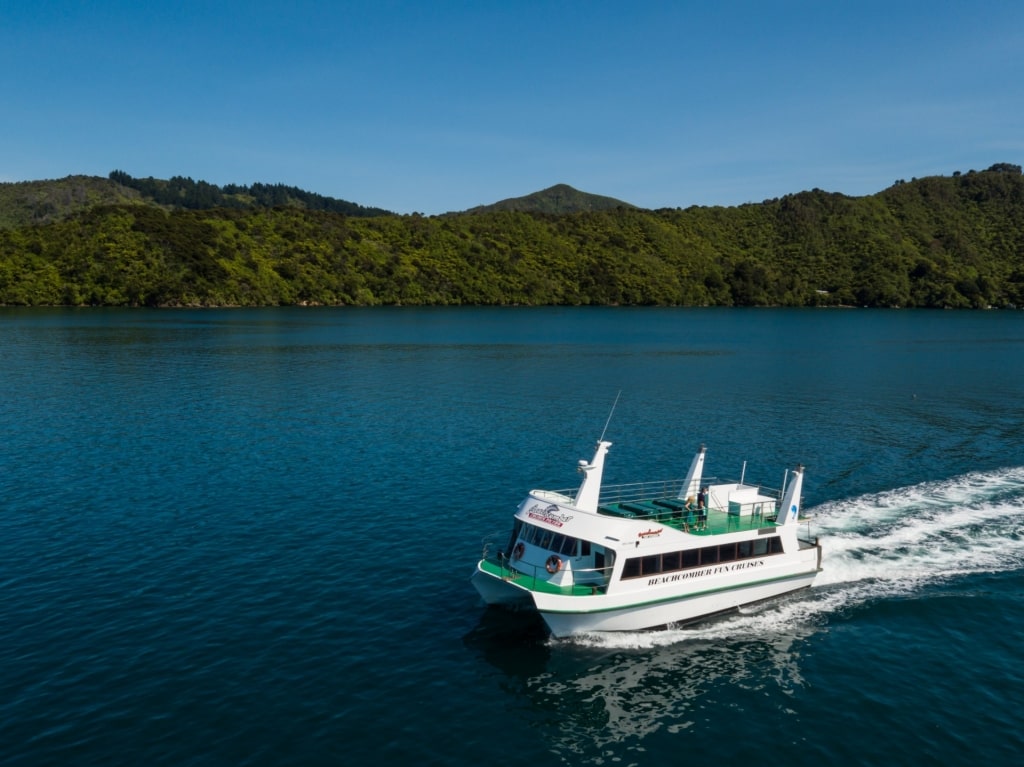
Marlborough Sounds, South Island
Today the Sounds provide not only that unique habitat but also a vast playground for nature lovers who can hike through forests, swim in deep oceans, kayak among pods of dolphins and even see the occasional orca.
Museum of New Zealand Te Papa Tongarewa, Wellington, North Island
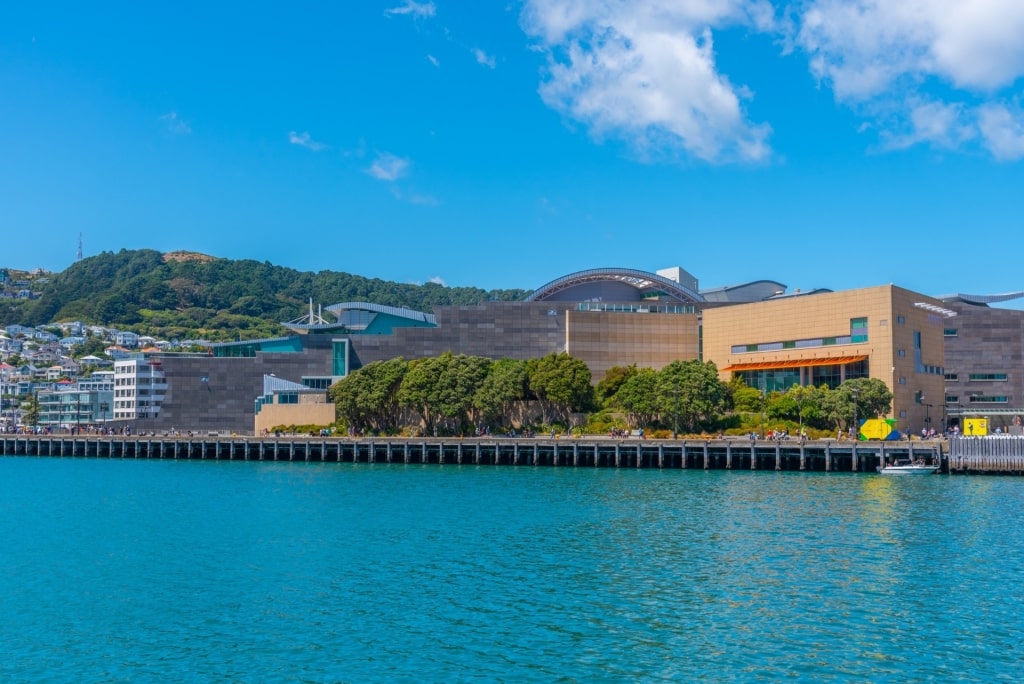
Museum of New Zealand Te Papa Tongarewa in Wellington, North Island
Formed after the 1998 merger of the National Museum of New Zealand and the National Art Gallery, Te Papa Tongarewa (container of treasures) is a celebration of Kiwi culture, set in a striking building on the waterfront.
Visiting here is one of the best things to do in Wellington. It contains several floors of exhibitions, as well as outdoor spaces with artificial caves and wetlands.
Permanent exhibitions include explorations of Māori culture, the stories of Anzac soldiers, New Zealand nature and the only colossal squid on display in the world, estimated to have weighed more than 1,000 pounds when still alive.
Cape Kidnappers, Hastings
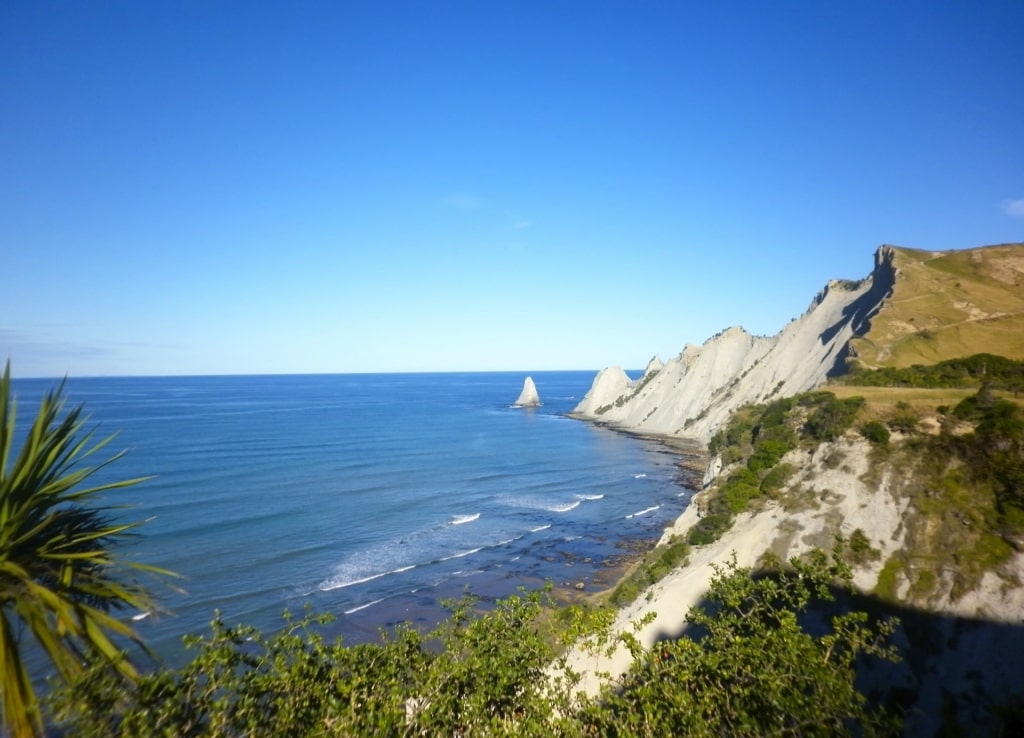
Cape Kidnappers, Hastings
Cape Kidnappers, or Te Kauwae-a-Māui, was evocatively named after an attempt by the local Māori to abduct one of the crew of early explorer Captain James Cook.
The rugged sandstone headland overlooking Hawke Bay is today famed for having one of the largest gannet colonies in the world making it a haven for birdwatchers who hike the trails for up-close views.
Birdies and eagles can also be spotted on the headland’s other main attraction, Cape Kidnappers Golf Course. Designed by American Tom Doak, it features deep cliff-top bunkers with sheer drops some 460 feet to Hawke Bay below.
While the whole course is jaw dropping, the sixth hole is renowned as one of the most spectacular in the world of golf.
Putangirua Pinnacles, Wairarapa, North Island
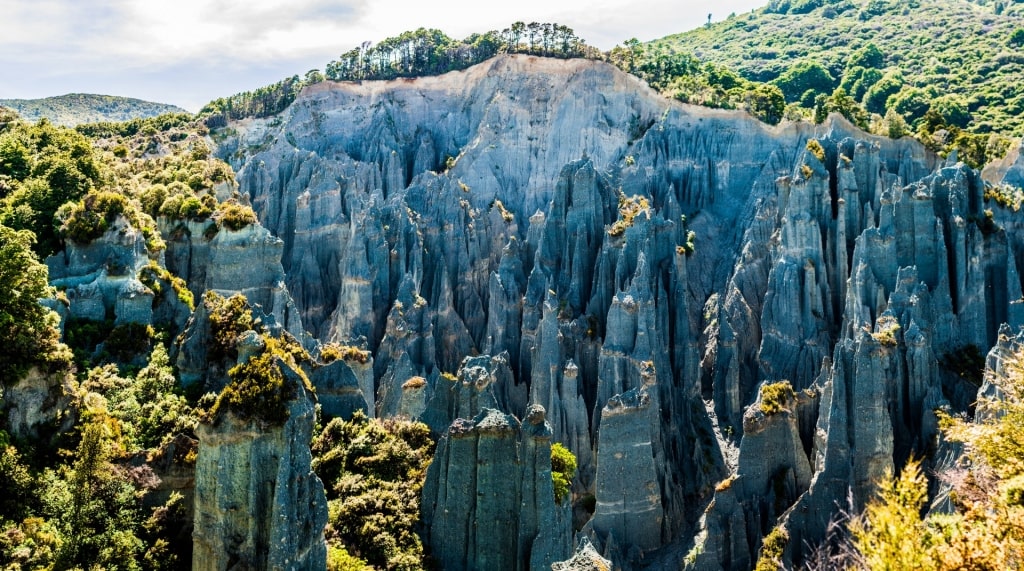
Putangirua Pinnacles in Wairarapa, North Island
Part of the Aorangi Forest Park and less than a two-hour drive from capital Wellington, the Putangirua Pinnacles offer an otherworldly experience that New Zealand is known for.
The set of ancient gravel spires jut like vast stone needles from the bed of the Putangirua Stream, which has been slowly eroding away the surrounding landscapes to form this incredible natural sight for more than 120,000 years.
The Pinnacles can be reached via three hikes with various levels of difficulty, all starting from the stream bed.
Blenheim, Marlborough, South Island
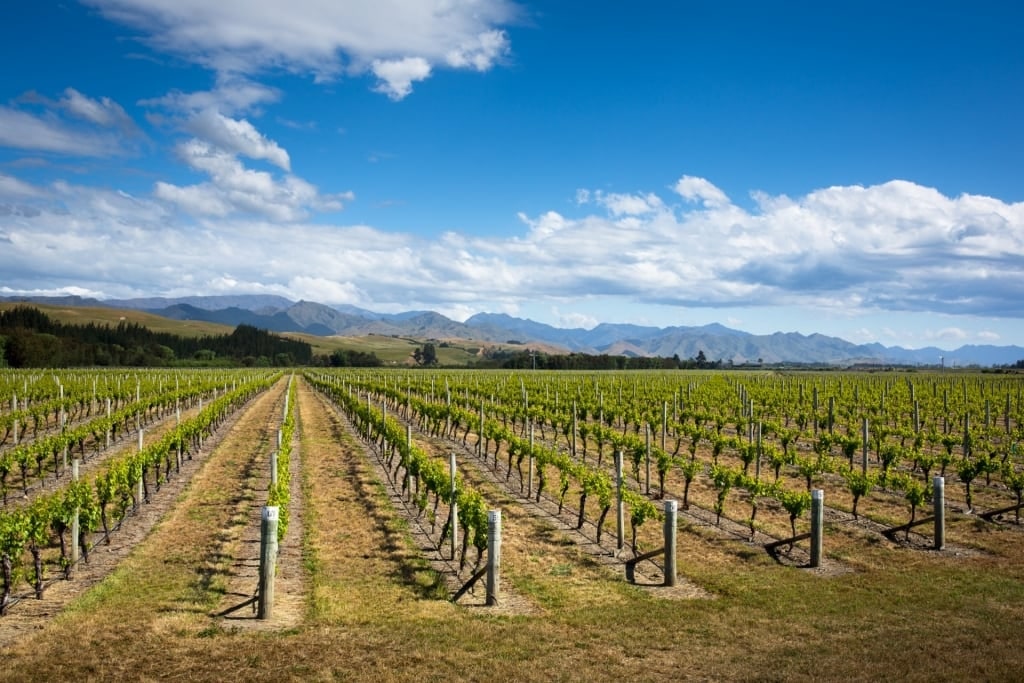
Blenheim, South Island
The fertile lands south of the Marlborough Sounds are home to the Marlborough Wine Region, the largest wine region in New Zealand, accounting for some 70% of the country’s production.
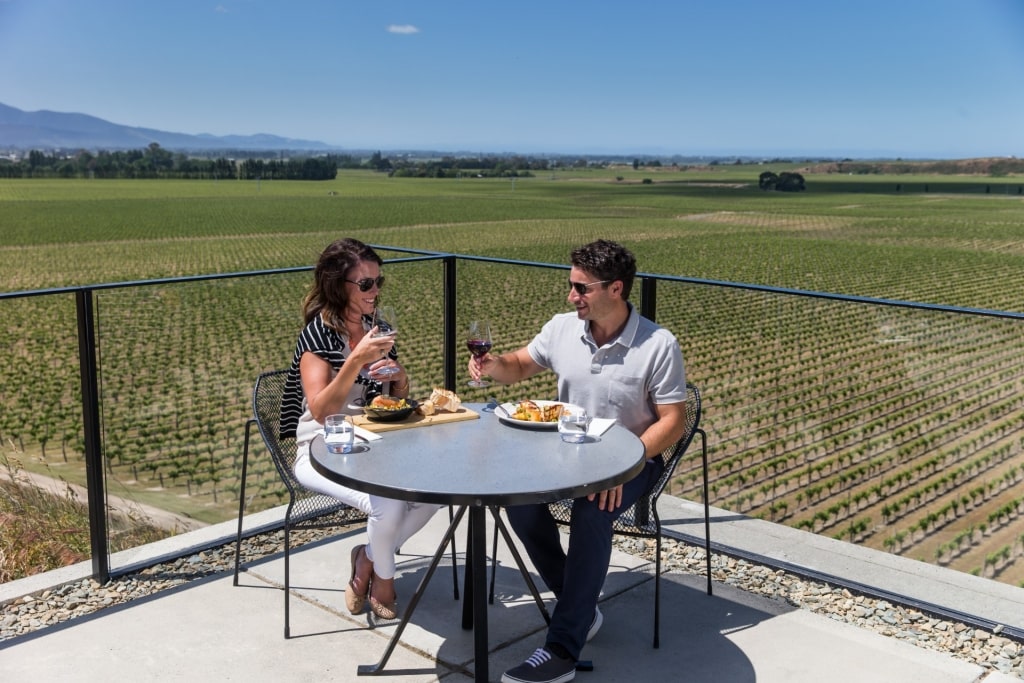
Blenheim, South Island
Blenheim is the town at the heart of the region and said to be the sunniest town in the country thanks to the surrounding mountains that trap in the summer heat.
With more than 30 cellar doors a short drive away, this is the perfect place to sample the famed Marlborough Sauvignon Blanc to accompany locally caught seafood.
The town is also home to the Marlborough Farmers’ Market, the Taylor River Reserve and Omaka Aviation Heritage Center that pays tribute to planes flown in both World War I and World War II.
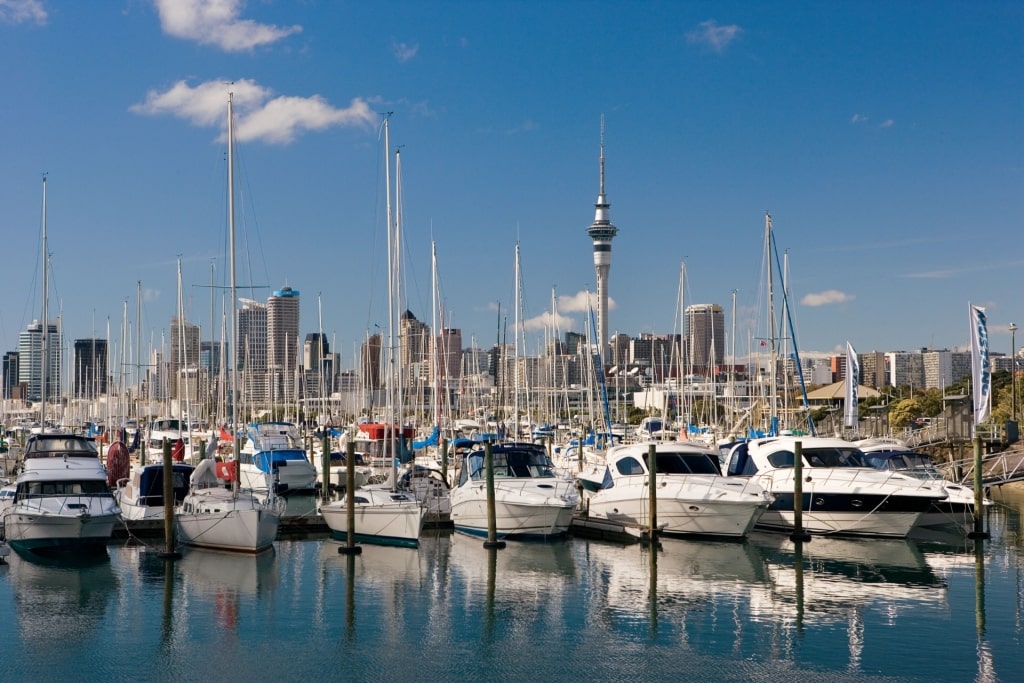
Auckland
Explore New Zealand on a luxurious Celebrity Cruises voyage. Browse New Zealand cruises here to plan your next adventure.
